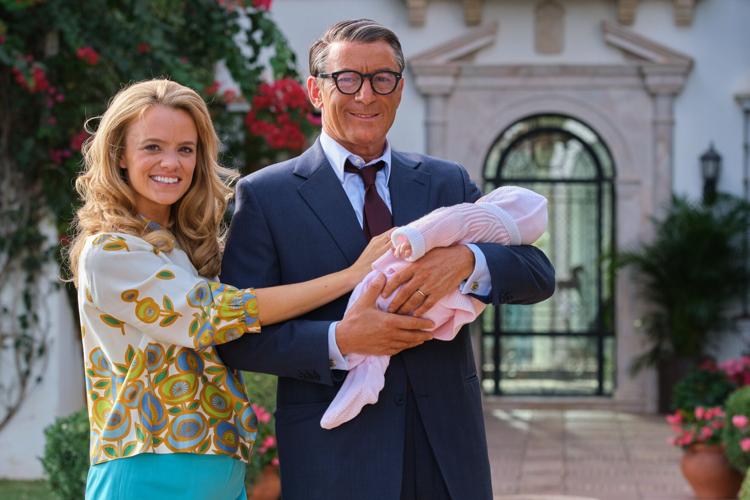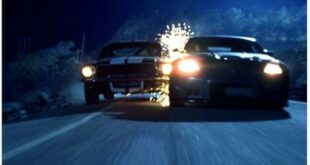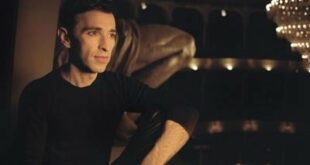Marilyn Monroe famously had no children. Ditto: James Dean.
Both are examples of Old Hollywood stars who never really became, well, old — their comets still blazing, and their stardom secure, despite not having future bloodlines to prop them up. A special kind of pixie dust.
In the Milky Way of classic celebrity, there are those, however, who constitute a whole other kind of orb: stars who conceived other stars, thus double-downing on their fame (here, I am thinking, for instance, of Kirk Douglas, who brought us Michael Douglas, or Judy Garland, whose daughter is Liza Minnelli).
Finally, yet another wrinkle in time: icons who had kids who are not particularly famous on their own, but whose mission in life, at least in part, has been to keep the legacy going of their larger-than-life parents. Examples here include Natasha Gregson Wagner, who wrote a loving book about her mother, Natalie Wood — and even helped steer an HBO documentary about her a few years back. Or Sean Hepburn Ferrer, who has taken on the task of maintaining the legacy of his mother, Audrey Hepburn, through a variety of projects.
Likewise: the charming Jennifer Grant, who wrote a book about her dad, Cary Grant, more than a decade ago, and seems to have returned to the well by producing a new scripted drama about him. A taut, thoughtful four-parter, it is titled “Archie” (the star’s real name was, after all, Archie Leach). And I could not help but ask, when catching up with her the other day, if there is a Hollywood “support group” going for the grown-up children of such mega-stars of the Golden Age?
“If you find out about one, let me know!” laughed the daughter of Grant — the man who helped define the word “debonair” — and his one-time wife, the actress Dyan Cannon.
But seriously, she went on: “I have never really felt the burden to keep his legacy going because it has gone on. He remains magnificent, and I am so used to people holding him in such high regard. No, I have never really felt the pressure to keep it alive.”
Bringing Grant to life, though, is the precise alchemy that English actor Jason Issacs pulls off in the series, putting to screen one of the great reinvention stories of all time: the boy from Bristol, neeArchibald Alec Leach, with the hardscrabble childhood, pebble-road accent, and mother locked in an asylum, who eventually, according to Jennifer, “recreated himself … becoming an acrobat, and going to New York, and then becoming Cary Grant.”
The man who not only helped define the oeuvre of Alfred Hitchcock — classics such as “North By Northwest” and “To Catch a Thief” — but remained “the No 1 box office superstar smoothie of the mid-20th century,” as The Guardian has described. An irresistible dancer-partner to legends including Grace Kelly and Katherine Hepburn.
Talking to his daughter reminded me also of one spot from which summit Cary Grant has never budged — that of Style Icon. It is a fact, after all, that even for younger people, who may never have watched his films, that his DNA remains strong in men’s fashion, from Tom Ford on. An embodiment of everything classic. “I find it fascinating,” she says, “that he invented himself … so it really was his own sense of style. What we now call a brand. But he had a real sense of who he wanted to become, and he became it.”
Additionally: “He did not have a very large wardrobe. He kept a small closet, very well organized. He was fairly minimalist. He thought: if people bought finely made things, you did not have to buy a lot, because they lasted. He believed in timeless fashion — a tie, for instance, should not be too wide or too narrow, just right in the middle.”
A curve in our conversation which reminds her that she has the distinction of actually being taught how to knot a tie by Cary Grant himself! A memory: “Very proudly, at age 10, or something, I would get behind him, and do his tie for him.”
There are also the ubiquitous heavy-set eyeglasses, which the actor used almost as a prop, particularly during his later years, and Isaacs, playing Grant, uses to convey the idea that Cary was hiding behind those specs. That he was someone else without them.
Wives, he had a few. Five to be exact, including Woolworth heiress Barbara Hutton (the richest woman in the world for a spell). The series itself mostly alludes to that particular marriage, and the rumours surrounding his affection for the other gender, and mostly just uses Cannon — his much younger fourth wife — as the frame for its narrative. She was the only one he procreated with, after all, even though their marriage only lasted a few years.
Exhibit A: my interviewee today. The daughter who actually prompted Cary to walk away from the movies, and become, in effect, a single dad. It is that idea — of dedicated fatherhood, particularly in later life — that gives the series oomph, especially toward the end. It is something you do not see reflected much in pop culture history.
“It is the truth of the matter. Dad was a maverick in so many regards, in terms of his career, not having an agent, in terms of not being a studio star (one of the first to go independent, unusual at the time) … and then at the height of it, in his sixties, walking away to become a father (until his death in 1986),” Jennifer says.
“As was my mother,” she promptly adds. “She was a young thing, and decided to have her career (red-hot back then). They switched roles. Something unheard of in that age and time.” (The power and age imbalance in the relationship is a recurring theme in “Archie”).
Did her father ever regret turning down the role ofrole of British spy James Bond when filmmakers were casting 1962’s “Dr. No,” the first big-screen adaptation of the Ian Fleming novels? I had always wondered. Cary, as it has been reported, was close friends with its producer (even best man at his wedding) and it was his for the taking. Though he would have been a no-brainer in many respects, he was weary of committing to a multi-picture contact.
“The one thing he said was: ‘Darling, I am very sorry, I could have made you a lot more dough’,” Jennifer tells me. “He just didn’t want to play the same characters for an extended period.”
A mom herself now — the L.A.-based Jennifer mentions that after watching the series, her 15-year-old son rather sweetly turned to her and asked, “Do you think I look like him?” — she once more loops back to the idea of reinvention. “That is the broad thesis of the series. What started as an image became the man.”
“Archie”is running now on BritBox in Canada.
Correction — Dec. 8, 2023
A previous version of this column mistakenly said the film “Charade” was made by Alfred Hitchcock. The 1963 film was directed by Stanley Donen, and has been referred to as “the best Hitchcock movie Hitchcock never made.”
Shinan Govani is a Toronto-based freelance contributing columnist covering culture and society. Follow him on Twitter: @shinangovani.
*****
Credit belongs to : www.thestar.com
 MaharlikaNews | Canada Leading Online Filipino Newspaper Portal The No. 1 most engaged information website for Filipino – Canadian in Canada. MaharlikaNews.com received almost a quarter a million visitors in 2020.
MaharlikaNews | Canada Leading Online Filipino Newspaper Portal The No. 1 most engaged information website for Filipino – Canadian in Canada. MaharlikaNews.com received almost a quarter a million visitors in 2020.












